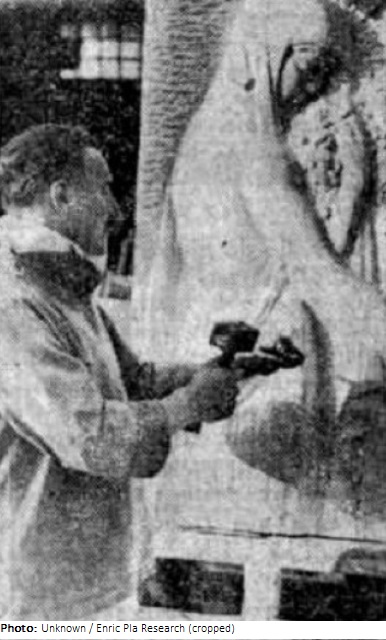Georges Halbout

Biographical information
| Roles | Competed in Olympic Games |
|---|---|
| Sex | Male |
| Full name | Georges•Halbout du Tanney |
| Used name | Georges•Halbout |
| Born | 15 December 1895 in Paris XIXe, Paris (FRA) |
| Died | 7 June 1986 in Bourdeilles, Dordogne (FRA) |
| NOC |  France France |
Biography
George Halbout, son of a jeweler, later adopted the name addition du Tanney. He studied drawing at the École Germain Pilon (design) and the École des Arts Décoratifs. In World War I he was a civilian prisoner-of-war of the Germans portraying his comrades and their guards. From 1916 he lived under observation in Switzerland and later translated for the US Army. In 1918 he entered the Ecole des Beaux-Arts in Paris to continue his studies. Later he shared his studio with Paul Belmondo, father of the well-known actor Jean-Paul Belmondo. After settling in Algiers for a study visit he became a professor at the Ecole des Beaux-Arts there.
After returning to France, Halbout taught anatomy at the École nationale supérieure des arts appliqués and became a professor of sculpture at the Academy of Fine Arts in Caen. After his retirement, he moved to Bourdeilles in 1966 and continued to work freelance on the estate of Les Bernoux. He received numerous public commissions for sculptures and medals. He primarily worked in terracotta and bronze, especially in his studio in Algeria (1929-37). Until the end of his life Halbout remained faithful to a classical concept of art and continued to work as a draftsman in addition to sculpturing. In 1950 he became Knight of the Legion of Honor. Whether the 37 cm high bronze statuette titled Danseuse (Female Dancer) is his Olympic entry could not be confirmed.
Results
| Games | Discipline (Sport) / Event | NOC / Team | Pos | Medal | As | |
|---|---|---|---|---|---|---|
| 1924 Summer Olympics | Art Competitions |  FRA FRA |
Georges Halbout | |||
| Sculpturing, Open (Olympic) | ||||||
| Sculpturing, Open (Olympic) | ||||||
| Sculpturing, Open (Olympic) | ||||||
| Sculpturing, Open (Olympic) |